The Motorola XT720 is a device that errs right on the line between high-end and what we’d now call superphones (or highest of high-end). Earlier in the year, this device would sit alongside offerings such as the original Motorola Droid and the then-newly-released Nexus One as a state of the art phone, but can the newly released XT720 keep up with today’s powerful behemoths?
Hardware
Cincinnati Bell’s chosen a device that many people (including myself) would be proud to carry on a daily basis. Even aesthetically, I wouldn’t be ashamed to own this phone with its silver and navy blue color scheme and the stylish curves that makes up its outer shell. The XT720 doesn’t feel like a child’s plaything when you hold it in your hand which is always a reassuring tip that it can not only stand the test of time, but gives you confidence that you’re not just holding a piece of junk. It’s not too bulky or heavy, but it’s not light to the point where you might forget you’re holding it (which has caused for some accidental drops for me with other devices in the past).
It takes a lot of cues from the Motorola Droid/Milestone: that makes sense seeing as this was introduced as the Milestone XT720 in other parts of the world. Even internally, this phone is very similar. It comes with the same TI OMAP 3430 (ARM Cortex A8-based) processor found in those phones (but clocked at 720MHz), and also comes with the same 256MB of RAM, 512MB of ROM, and a 3.7-inch TFT LCD display (854×480 resolution). With these internals, it makes using Android a breeze and – while it may not be as speedy as an overclocked Droid or a phone with a stock 1GHz processor – it gets the job done for most of the things you’re going to want to use it for out of the box.
Going even deeper than the usual internals, it not only emulates the Milestone, but takes things a huge step further: it has an 8-megapixel camera backed by a Xenon flash for great photography performance and 720p HD Video recording to back it up. With words alone, I can’t express how much I love the Xenon flash on the XT720, but we’ll go more in depth with that in the camera portion of this review. The phone is light on hardware buttons (the usual volume rocker and power/lock buttons are present), but it adds a couple more for the photog’s pleasure. A dedicated camera button sits alongside a capture/playback mode toggler that really drives home the point that this could replace a point-and-shoot. I wish the power button wasn’t so recessed into its groove as it’s often a pain to use when having to continually wake the device up from its slumber. It’s nothing you can’t get used to with time, but expect to have to actually look for the power button every so often when you first get the device (without looking, the 3.5mm headphone jack and the power button feels the same).
The phone comes with an HDMI port that’s covered up by a door to protect it from dust, dirt, and other elements of nature. Unfortunately, I couldn’t get this port to do anything to save my life. While Motorola was gracious enough to include a micro-HDMI cable to use with the phone (they’re ridiculously hard to find, if you didn’t know), I’m having the same problem using it with my Samsung-built HDTV that many are: it just doesn’t work. This isn’t a fault of Motorola’s.
After further research online, I concluded that this connection type (Type D) was incompatible with my Samsung LCD purchased in 2008 (model number LN46A630). It’s unfortunate that those with HDTVs will only have hope to go on if HDMI connectivity was something that draws them to this phone. They state most newer models should support Type D connections, but I wouldn’t leave it up to chance. Be sure to do some research on your TV (most manufacturers should list connectivity compatibility in their technical sheets) before you take the plunge.
The audio quality and speaker output on this phone is amazing, to say the least. The speaker grill on the back of the device is a bit wider than normal and allows sound to flow out as much as it needs to. Notifications are ridiculously loud, you’ll never miss a call that you didn’t want to take, and music playback was as good as you’d expect for a phone. It isn’t just loud, but very clear. Whether I was watching a YouTube video, listening to the FM radio, or taking Pandora for a spin, I had no qualms with playback quality considering how limited a phone’s speaker output can be. Unfortunately I didn’t have time to showcase the audio clarity on video, but take my word for it: this thing booms.
Battery life is always something of major concern going into a phone purchase (Because what good is a phone if you can’t use it?) so that was naturally one of the first things I wanted to start tracking as I began testing the device for my review. I could easily make it through a day and a half with moderate usage on this phone’s 3.7v lithium-ion battery which has a minimal capacity of 1390 mAh. Even with heavy usage, getting through a day (16 hours, typically) is no insurmountable task for the device. I didn’t put it through extreme testing (music streaming all day, video going, nonstop browsing, 10 services syncing at the same time, etc.) but if you’re the type to use your phone that much then you’ll be looking at spare and extended options regardless.
There was one very weird issue I had with the capacitive buttons on this device. They do their job, per se, as when you touch them they get you around the Android OS, but sometimes the backlight for the buttons flicker on and off repeatedly, or they might not even do you that favor: sometimes they just won’t turn on or won’t go off. The former is especially annoying if you haven’t memorized the layout of the buttons and you need to operate the device in the dark. With time, you’ll certainly get used to where everything is (button layout isn’t standard on Android so expect difficulty in adjusting coming from a different device), but the issue will throw you off at first. I’m not sure if this could be a software or hardware glitch, though, but I’m hoping a fix is in the pipeline. It’s most probably due to the XT720 doubling the backlight’s purpose to be a notification, but a traditional LED light for notifications would’ve been more appreciated.
Overall, it’s very solid hardware. It might not be the most powerful under the hood compared to today’s superphones, but this sits alongside Cincinnati Bell’s other offerings as arguably the best phone they have to offer, going on hardware specs alone. What about the software to make up this two-way dance, though?
Software
While there isn’t much to the XT720’s software compared to other handsets (including Motorola’s own MOTOBLUR-enabled offerings) it’s still very interesting. It’s like MOTOBLUR, but without the full package of features that makes MOTOBLUR what it is. How you feel about this will depend on how you feel about “bloatware” in general, but personally I found it to be a great experience. I actually like the look of MOTOBLUR, but I don’t care too much for the services and widgets it comes preinstalled with: I’m the type that likes to get everything I need from the Android market. It’s great that some earlier MOTOBLUR phones came with remote security features, social networking widgets, and a whole slew of other bells and whistles, but I like working from a clean slate and that’s what the XT720 (at least the one specifically offered by Cincinnati Bell) provides.
You get the MOTOBLUR launcher (sans widgets), the notification bar, the camera app (which is great), and the overall color scheme, but the lack of MOTOBLUR services gives you room to shape your device how you want. It does still come preinstalled with a few non-Google apps (which are uninstallable), but the selection isn’t terrible at all: a task manager (we all know the age old debate, but it’s there if you need it), a video editor, QuickOffice, a gesture-based radio toggler (which I couldn’t get to work), and a notepad application are the main takeaways as far as non-Google additions go.
Again, some may prefer and appreciate some or all of these apps, some may not, but they don’t get in the way at all and it might save you a few megs of data from having to download similar apps from the market. Other additons include a Media Share application which allows you to playback content stored on your device to any other connectable, compatible device. I didn’t get to test this out with many solutions, but the built-in Xbox support was easy to use and setup (though I can emulate the same functionality from other phones simply by enabling the USB mount or with third-party market software.)
Motorola has also included Phone Portal which is very useful. In addition to the usual contacts, calendar, and other pieces of data it helps you back up, you’re given a native solution to back up and restore all of your SMS messages, bookmarks, and call history. Not many phones do this out of the box so I was very surprised to see the Windows-based software automatically prompt me for installation upon plugging the phone up for the first time, saving me a trip to Motorola’s support and downloads site. Everything came together wonderfully and I was up and running in no time. Other than that, it’s pretty much what you’d expect out of Android 2.1. You do get a couple of unique widget options – such as the ability to place a note you’ve created on the homescreen – but that’s just about it.
Media Link is another downloadable Windows-based application which allows you to sync all of your media up to your phone for playback, and it worked well enough (this one I did have to trek to Motorola’s site to get). Setup was simple and I was on my way. I only tested syncing a few photos and about 300 songs (there is support for video, but I didn’t have any video to transfer), but they synced without fail and didn’t take long at all (times will certainly vary depending on how many photos and how much music you have to transfer).
Overall, it’s not the most exciting package to look forward to in terms of preinstalled software and out-of-the-box features, but the brevity of what you’re greeted with is highly appreciated if you love a completely stock experience as I do. The fact that there aren’t a lot of moving parts to the software is a huge upside to the device’s battery and general performance.
Camera, Media, Odds & Ends
Before moving on to the camera portion of the review, I wanted to touch on the video editor quickly. The editor is great for stringing together still photos, but it’s been a pain for me to add any video. I tried testing it with video recorded at different resolutions (about five to choose from ranging from the lowest quality to HD 720p) and it would not let me add anything as I was constantly shot down with a message saying “unsupported resolution”. It’s unfortunate considering the lack of video editing options on the Market – even if this built-in solution proved to be limited outside of making quick photo slideshows. You can enter text and music, but there was no way to cut video from what I could tell – which makes it not much more than a glorified powerpoint slideshow maker. Perhaps I’d appreciate it more if it allowed me to add video clips, but it appears that was an unfortunate oversight in development and the QA process.
It almost feels wrong that phones are still launching with single and dual LED lights to compensate for low light situations. I could be standing in a pitch black room with the XT720 and the Xenon flash – even for the split second that it does its duty – could illuminate the area enough for a very decent picture. Autofocus on this phone is assisted by a red laser to “paint” the target to make sure that – even in that same dreaded darkness – your photos don’t come out looking like dung like I’ve seen on other devices.
For an example of that, take a look at these photos of an Atlanta souvenir magnet that I took in complete darkness:
And one even closer to back up the close-up autofocus claims:
And while I know a phone’s megapixel count doesn’t always play a factor in the quality of images it’ll take (I can still get better performance out of a 3-megapixel point-and-shoot than I can on my EVO’s 8-megapixel camera), I’m sure the 8-megapixel sensor on the XT720 is playing a big part in the clarity you can achieve in your photos. Here’s a picture of a tree taken on mostly default settings in completely natural lighting:
Even taking close-up photos of small objects with doable lighting conditions, the Xenon flash doesn’t hurt the image too much – with LED on other phones, the light would completely drown the subject out if it were too close to the sensor. Here, not so much (to be fair, though, it’s not common to take a macro shot with flash. Most people would use external lighting methods or natural lighting for this purpose.) Additionally, most devices aren’t too great with autofocus performance when taking an exteme close-up shot of an object, but the XT720’s focusing laser makes that a non-issue.
Here’s a picture I took of a Bud Light lime bottle cap sitting on my admittedly-dirty laptop in moderate daytime natural lighting (shining through the window) after guzzling the refreshing beverage down (the Xenon flash was enabled to show you how it handles subjects that are close to the sensor. This photo was also slightly zoomed in.):
These features alone – alongside a dedicated playback and shooting mode button as well as a dedicated snapshot button – will allow you to confidently retire your point-and-shoot. Things get even sweeter with the software features, though, such as panorama mode (as well as other standard shooting modes), the ability to choose between different scenes for different occasions, face detection, image stabilization, and more. I’d love to see more level adjustments outside of brightness – such as contrast and saturation – but you rarely find yourself needing these compensating features as there’s not much to compensate: the camera just “gets it”.
I didn’t get a chance to check out every nook and cranny of the camera software (which includes all of the standard shooting modes and image settings you’d expect from other MOTOBLUR devices and basic cameras), but I did get captures with some of the more desirable shooting modes. Panorama mode – while not as intuitive on some Galaxy S devices – does the job well. It doesn’t assist you as much as other phones and P&S cameras do, but it still pieced together a fairly decent looking shot. Here’s a sample of one taken from the balcony of my apartment complex (click to enlarge):
Here’s a final bonus shot of the camera’s performance in a moving vehicle on a hazy day (sports mode setting to compensate swift movement). Not the greatest, but what do you expect from a cell phone’s camera sensor (or a point -and-shoot, even) going 40 miles per hour?
I wish I could give the same high marks for video. Even recording at 720p resolution, video quality was horrendous with many scanlines plaguing my view finder. To be sure it wasn’t just the view finder, I transferred the files to my PC to take a look and was faced with the same jittery playback. The lighting condition wasn’t completely bad – I had a ton of light coming in from various windows in the house as well as artificial light sources – but it still wasn’t enough. Heading outside to shoot video at the brightest point of the sunny day (I didn’t get a sample of that, but the following video is close in terms of natural lighting) made for a better experience, but video was still choppy and didn’t look as clear as on the newer Droid X and Droid 2 (and this was after fiddling around with the limited offering of settings).
It’s a shame that the video suffers so much considering how great still photo capturing is on this device. Your mileage may vary considerably from device-to-device, but the experience I had with our review unit just didn’t impress me at all (and if we can assume that this uses a sensor similar to the one found in the newly-released Droid X or Droid 2, then I can’t see why that is because video recording on those phones seem to perform just fine.)
Is This Another Milestone for Motorola?
I’m not sure if it would be accurate to call this a milestone for Motorola, in reference to the header of this conclusion, but it’s certainly a Milestone for Cincinnati Bell. While they’ve enjoyed great success with their first Android-powered handset – the Blaze – the Milestone XT720 trumps it in every imaginable way and can definitely hold its own up against the more capable offerings of some of the bigger carriers out there. Everything from the camera with the amazing Xenon flash and build quality of the overall hardware down to the nimble feeling you get with the not-so-bloated software makes the XT720 a device worth checking out if you live in Ohio and can take advantage of Cincinnati Bell’s network. Unfortunately, video on this device failed to impress as the outcome was equivalent to watching a dirty old VHS, but I can’t confirm if that was just a problem with this particular unit or if it’s an issue across the board. Even with that, I wouldn’t be hesitant to buy this device – especially if you fancy their deep selection of affordable rate plans – and I could see myself carrying it for a long time without a desire to dump it.
[Update]: It appears that the video performance could suffer due to the performance of the microSD card, not the camera sensor itself. As ‘Memory Card Man’ in the comments section points out, the speed class of your storage card could determine the quality of the video you record with it. The phone comes with a Class 2 8GB microSD card, so be sure to go out and grab yourself a Class 6 or higher (but Class 6 should be enough) if you plan on using this for video quite often.


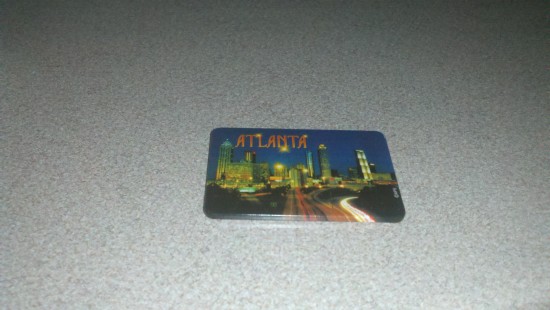
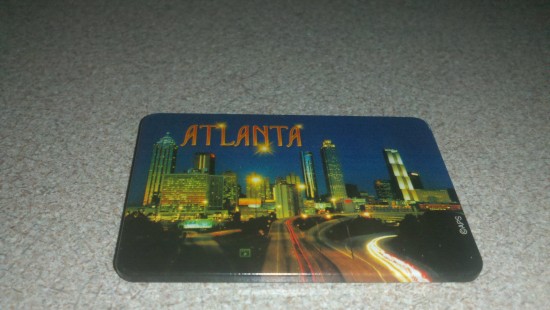

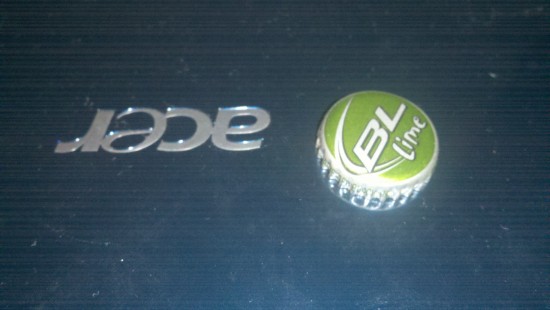



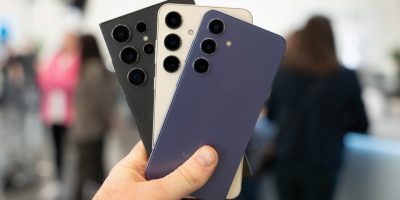

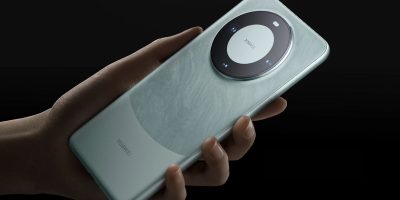
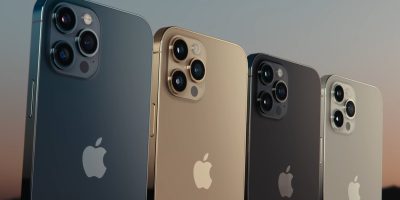




Excelent, I really want to know about the speed!!
720 ghz wowzers
Fixit
whoops, thanks Mike!
Hi Guys,
I’m from Singapore, and I’m using a HTC Hero.
This Motorola XT720 looks exactly like what was released by Motorola here in Singapore, http://www.motorola.com/consumers/XP-EN/MOTO-XT720-XP-EN.do?vgnextoid=695e662d64219210VgnVCM1000008406b00aRCRD
I’m just a consumer, but could someone help me verify wether it is the same phone? Because I’m thinking of getting one. Thanks in Advance
The reason your 720P video recording experience was poor is because the 8Gb memory card included is Class II. You need at least Class VI for the intense read/write functions for HD recording. Difference in day and night if you change that!
@Jamaluddin yes technically the same device, but this may have software customizations different from the Singaporean version.
—
@Memory Card Man that makes sense as my HD camcorder treats SD cards the same way. I wish I’d been ready-minded to try the 8GB Class 6 MicroSD card I have installed in my EVO to see if that was indeed the issue..
I have the Cincy Bell XT720… It’s fantastic… I compared performance with my buddy’s Droid X… speeds/funcitionality differences were indistinguishable…. Get it.. you won’t be disappointed.
I’m using the singapore version and it comes with a class 4 card. The hd recording still a bit jittery but it improved (not much) when I installed and run the cachecleaner app. Maybe you can try doing some recordings with an empty card, that might help. But considering that it only has 256mb ram, I doubt we can get butter smooth recording with it.
About the blinking buttons, that’s the notification when you receive sms. I wish it had the same notification led like the original milestone. And I think I managed to add video into the video editor but only for vga resolution.
@MemoryCardMan…How do you know what class of SD card you have? I have and 8GB from my Eris and a 16GB from my DX and they look identical.
Found this on Wikipedia on SD Card Classes. This ticks me off, I believe my DroidX only has a Class 2 but I am still a little uncertain. Can anybody confirm?
Speeds
There are different speeds of SD card available. The official unit of measurement is the Speed Class Rating; an older unit of measurement is the × rating.
[edit] Speed Class Rating
The Speed Class Rating is the official unit of speed measurement for SD Cards, defined by the SD Association. It is equal to 8 Mbit/s, and it measures the minimum write speeds based on “the best fragmented state where no memory unit is occupied”:[10]
The following are the ratings of some currently available cards:
Class 2: 16 Mbit/s (2 MB/s)
Class 4: 32 Mbit/s (4 MB/s)
Class 6: 48 Mbit/s (6 MB/s)
Class 10: 80 Mbit/s (10 MB/s)
Even though the class ratings are defined by a governing body, like × speed ratings, class speed ratings are quoted by the manufacturers but unverified by any independent evaluation process. In applications that require sustained write throughput, such as video recording, the device may not perform satisfactorily if the SD card’s class rating falls below a particular speed. For example, a camcorder that is designed to record to class 6 media may suffer dropouts or corrupted video on slower media.
Important differences between the Speed Class and the traditional CD-ROM drive speed measurement (“×” speed ratings) are that speed class:
1.may be queried by the host device
2.defines the minimum transfer speed.
Since the class rating is readable by devices, they can issue a warning to the user if the inserted card’s reported rating falls below the application’s minimum requirement.
On 21 May 2009, Panasonic announced new class 10 SDHC cards, claiming that this new class is “part of SD Card Specification Ver.3.0”.[11] Toshiba also announced cards based on the new 3.0 spec[12]
On 01 Jun 2010, Pretec announced the new Class 16 HD video grade SDXC 64GB card at Computex Taipei 2010.[13]
Should say on the card what class it is. Motorola only ships C II, so if you see a 2 on it you have your answer.
Yep, it has a 2 so that confirms that. That just pisses me off that motorola only put a Class 2 in the X. Why would you advertise something as being able to record 720P when in actuallity your not because of the class of SD card they have installed. Outside video looks ok but inside is just horrible and all video’s do not flow from frame to frame well at all.
8GB Class 6 memory cards are pretty cheap. 16GB fairly inexpensive as well.
Anyone know where I can purchase a Motorola Cradle/Docking Station for this phone? Seen photos on the web, but no where to purchase.
#
14. C wrote on August 19, 2010
Anyone know where I can purchase a Motorola Cradle/Docking Station for this phone? Seen photos on the web, but no where to purchase.
———————-
It should use the same docking station as the Droid / Milestone. My wife’s XT720 (Singapore) came with a docking station which said “Motorola Sholes” on it so I’m assuming all Sholes-class devices use the same kind of docking station.
@Jamaluddin – you might want to check on GSM and 3G frequencies, to ensure that the phone can work on Singapore’s frequencies.
Singapore version got free Docking Station and Moto leather pouch along with the phone :)
Mine has been rooted and running stable at 800MHz for daily use, app2sd is also possible.
Btw, I believe the cpu should be omap 3440 instead?
Will this device get a Froyo update? Any news/info/rumours?
What the…?!? WHO?!?! Cincinnati Bell??
Is this real? Do they offer service outside…well…Cincinnati? Is this real? Shouldn’t you review this phone in a local weekly newspaper for people inside city limits or something?
Actually…this was an eye-opener. I had no idea little mini-companies that offer cell service in a small city even existed, much less had the clout to get their own phones made for them by a major cell phone company.
Hmm.
worth buying Motorola “Motorola XT720” cuz it has everything you need….
@joe they offer service in several cities and run on t-mo 3g bands.
i got this from cin bell and am running it on t-mo getting 5 mbps down. you can root this with the universal androot app and is stable overclocked to 1.2ghz
@pablo
I checked the XT720 connector USB connector and it the other way round compared to the original milestone/droid. Dont think you can use the same docking station???
I’ve had the Motorola XT720 unlocked from NewEgg for the past month and I love it. Works flawlessly on T-Mobile’s 3G network…in fact, it achieves near-4G speeds hooking up to T-Mo’s HSPA+ network.
With regards to the docking station question, I do not believe this phone is compatible with the Motorola Droid’s station…I bought one and promptly returned it after discovering that the mini-USB plug on the Droid’s multimedia station is upside down. Perhaps a multimedia station for the straight up Milestone will work (as opposed to Droid)?
I really like the phone, but I am finding the photo performance pretty sub-par compared to my Canon 6MP point-n-shoot. I was hoping to be able to retire the Canon with this device, but I don’t think I can seeing the resulting images. Not a lot of crispness or color fidelity. They’re certainly better than my 2G iPhone, but that’s not saying much. BTW, I got this phone unlocked from Newegg.com and run it on T-Mobile’s HSPA+ network without problems, too. (Suck it, AT&T!)
Hey people, whoever has an upper (6-10) class SD card with an XT720, can you make a sample video on to youtube? And point out what class your sd card is. Will help alot.
I’ve had one of these since the 6th to August. Great phone but I’m also experiencing the same problem with the capacitive buttons deciding to not light up from time to time. Really annoying when I’m sitting my dimly lit living room watching tv. I also have the same exact TV (Samsung LNA630) so I am glad that I now know why the HDMI cable would not do a thing. I downloaded Dock Simulator instead of purchasing a dock (not sure if the desktop dock on Amazon will work or not) but you could simply make one using a magnet and a couple of pieces of wood. I will say the mobile dock/cradle that is on Amazon will not work (it says Droid, but does not list a model) from first hand experience. My only gripe so far is that I cannot find accessories and Cincinnati Bell does not have cases yet.
Could anyone with a cincinnati bell xt720 upload a .Sbf. recently
while trying to apply apps2sd and JIT I messed up my phone and had to flash it with a central european rom and now I can’t get a data connection to work. thanks
Just a quick heads-up. I-Wireless in Iowa (iwireless dot com) also sells this phone now, perhaps other T-Mobile affiliates will start carrying soon.
Wind Mobile is now selling this phone for $430 Canadian.
XT720 is so far the best brand new phone I’ve used,it has Internal Memory of 150 MB storage, 256 MB RAM, 512 MB ROM.and wifi.and I also purchased it unlocked from puremobile which make life easier.It’s a cool phone I love it.